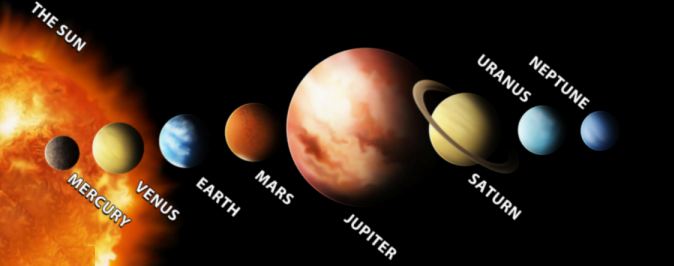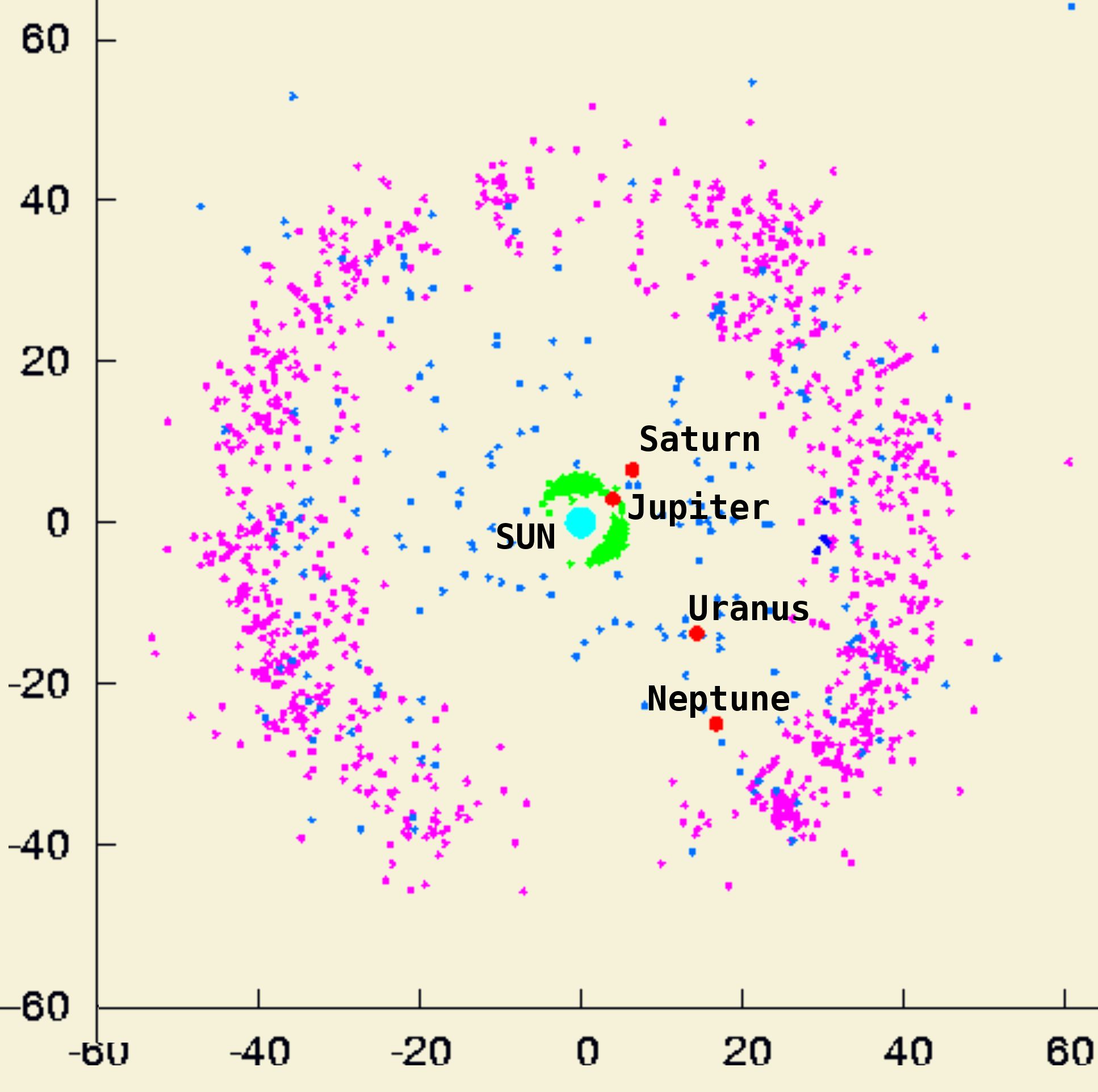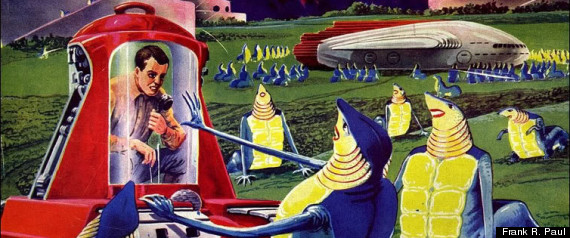 Until 2006, the answer was 9. Even today, one of the best web sites
to explore our neighbors is
The Nine Planets, from where
I took the picture on the right. I recall that back then, the 6th graders
had very strong opinions on the status of Pluto, especially since Clyde Tombaugh,
the discoverer of Pluto, is counted as a native son here in New Mexico.
Neil deGrasse Tyson even got
hate mail from children about this. Nowadays, in 2013, it is no longer
a big deal.
Until 2006, the answer was 9. Even today, one of the best web sites
to explore our neighbors is
The Nine Planets, from where
I took the picture on the right. I recall that back then, the 6th graders
had very strong opinions on the status of Pluto, especially since Clyde Tombaugh,
the discoverer of Pluto, is counted as a native son here in New Mexico.
Neil deGrasse Tyson even got
hate mail from children about this. Nowadays, in 2013, it is no longer
a big deal.
|
 So now we have dwarf planets or minor planets, and Pluto is one of them.
How many others are there? On the right is a top view of the Solar system
(from here),
zoomed out quite a bit. The inner planets are not visible on this scale.
Thescale is in AU (astronomical units, 1 AU is the distance from Earth to
the Sun).
Known Kuiper belt objects are in pink and blue. These all spend much
of their time beyond the orbit of Neptune. Some are bigger than Pluto.
How many deserve to be called dwarf planets? One criterion is that 'planets'
should be big enough to pull themselves into a round shape. What is 'big
enough'? For a rocky object this is about 900 km. Currently, a handful are
known, but there may be a few hundreds more to be discovered.
So now we have dwarf planets or minor planets, and Pluto is one of them.
How many others are there? On the right is a top view of the Solar system
(from here),
zoomed out quite a bit. The inner planets are not visible on this scale.
Thescale is in AU (astronomical units, 1 AU is the distance from Earth to
the Sun).
Known Kuiper belt objects are in pink and blue. These all spend much
of their time beyond the orbit of Neptune. Some are bigger than Pluto.
How many deserve to be called dwarf planets? One criterion is that 'planets'
should be big enough to pull themselves into a round shape. What is 'big
enough'? For a rocky object this is about 900 km. Currently, a handful are
known, but there may be a few hundreds more to be discovered.
|
|
This month (November 2013) marked the announcement of the discovery of
the 1000-th (in fact up to 1471) planet that is not in our own Solar
system. The animation on the right shows all of them. Also this month
a calculation showed that earth-like planets are plentiful, and there
could be one nearby, that is, a few lightyears away.
Links:
|
 That is, Mars, Jupiter, or the moons of Saturn? I always hate to break
the bad news to them, but the answer is no. Even on our own Earth, there are
plenty of places where people do not live, even though they may be
beautiful or interesting. There are no human colonies on the South pole, or
on the bottom of the oceans. These are a lot easier to settle, and safer,
than any place in space away from the Earth. However, you can find people
in otherwise inhospitable spots on Earth, usually when there is money
to be made, or scientific research to be done. Space is no different, except
it is a lot more expensive and a lot more dangerous.
That is, Mars, Jupiter, or the moons of Saturn? I always hate to break
the bad news to them, but the answer is no. Even on our own Earth, there are
plenty of places where people do not live, even though they may be
beautiful or interesting. There are no human colonies on the South pole, or
on the bottom of the oceans. These are a lot easier to settle, and safer,
than any place in space away from the Earth. However, you can find people
in otherwise inhospitable spots on Earth, usually when there is money
to be made, or scientific research to be done. Space is no different, except
it is a lot more expensive and a lot more dangerous.
Links:
|
|
I finally built a Van de Graaff generator. After keeping an eye out for
years for something to make a suitable conducting sphere out of,
I had finally discovered large
metal half-spheres - IKEA sells
stainless steel bowls that have no lip,
no sharp edges - ideal for high voltage applications. I bought a pair of
each size they had. I Googled around for a bit and found
this description
by Mark Rehorst of a VDG generator he had built. I basically
built his design, with a few small improvements.
This machine was invented by Robert Van de Graaff, born in Tuscaloosa, Alabama,
in 1901. Machines like this, but much larger, were used in nuclear physics
research to accelerate particles. Many are in use to this day.
There is a Van de Graaff airport in Tuscaloosa, but it is not named
after Robert, but after
Hargrove Van de Graaff, a football player. Figures.
Links:
March 2011
|





